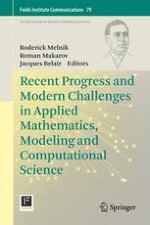2017 | Supplement | Buchkapitel
Coexistence in the Face of Uncertainty
verfasst von : Sebastian J. Schreiber
Erschienen in: Recent Progress and Modern Challenges in Applied Mathematics, Modeling and Computational Science
Verlag: Springer New York
Aktivieren Sie unsere intelligente Suche, um passende Fachinhalte oder Patente zu finden.
Wählen Sie Textabschnitte aus um mit Künstlicher Intelligenz passenden Patente zu finden. powered by
Markieren Sie Textabschnitte, um KI-gestützt weitere passende Inhalte zu finden. powered by
